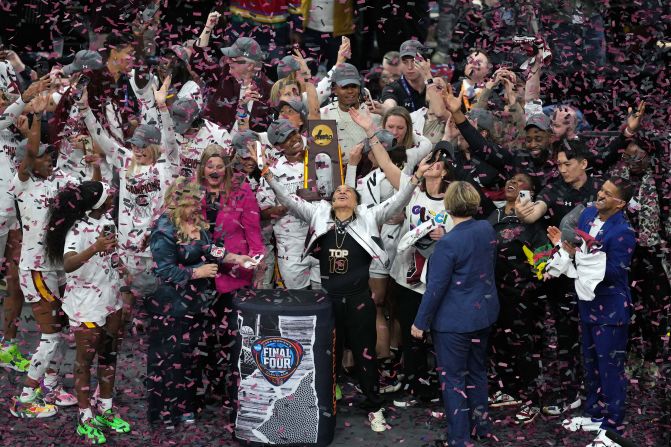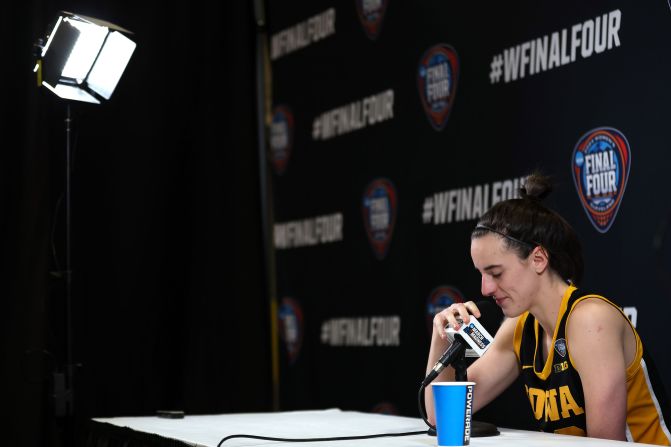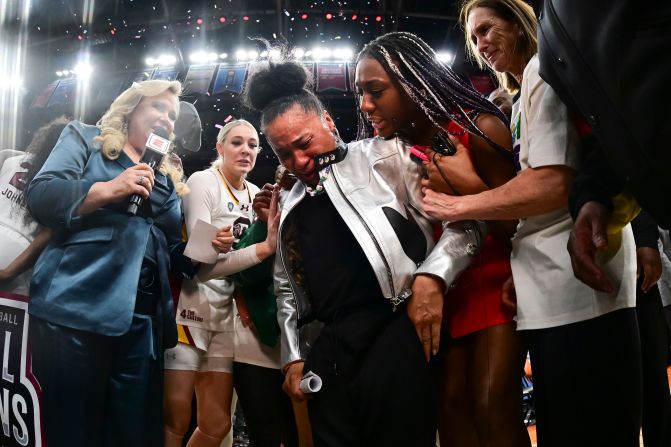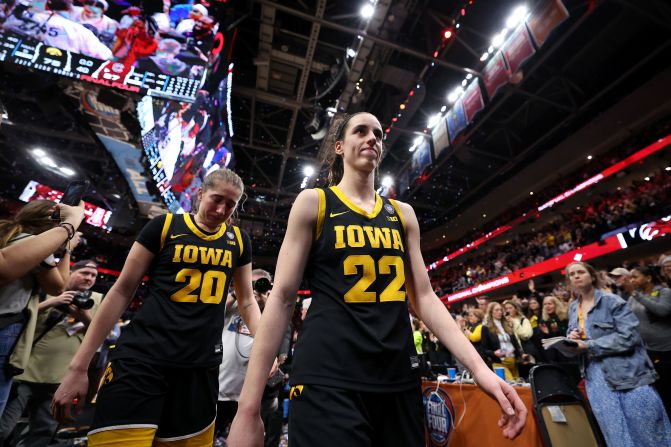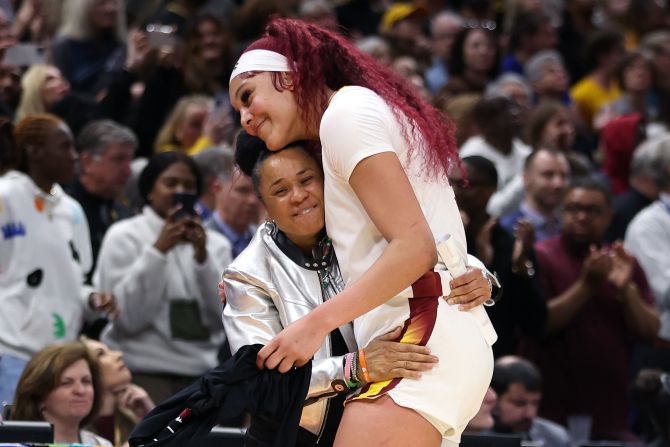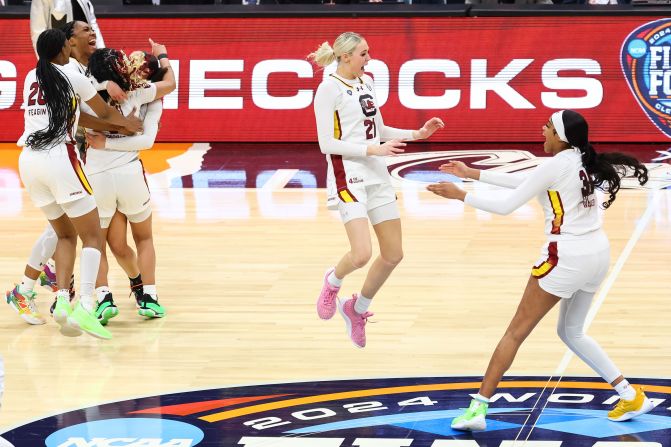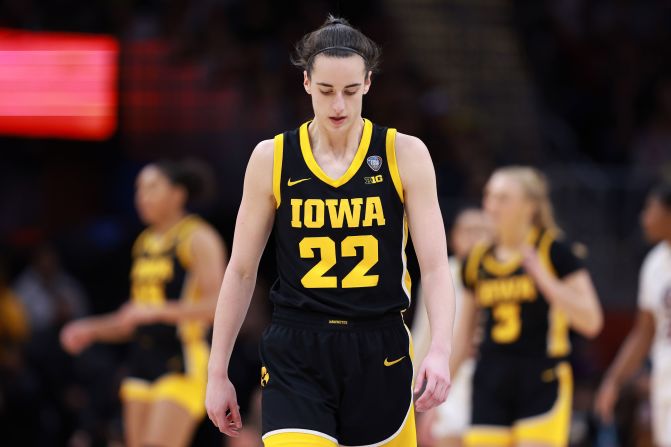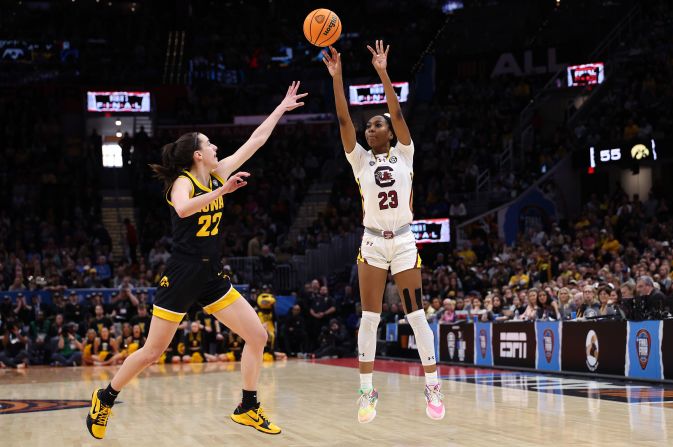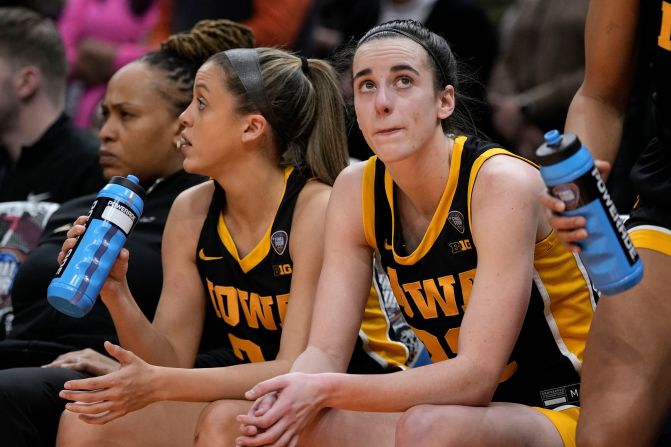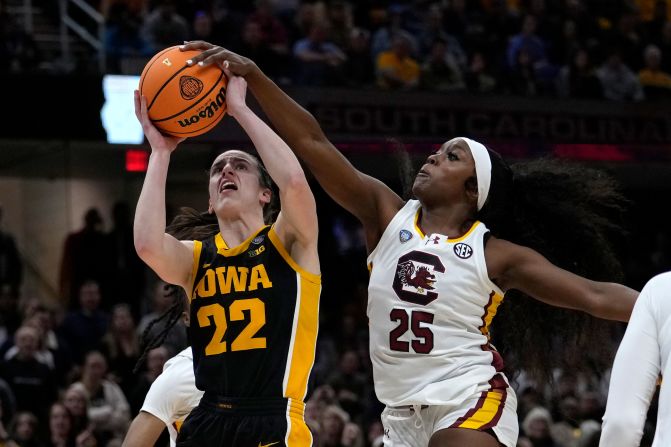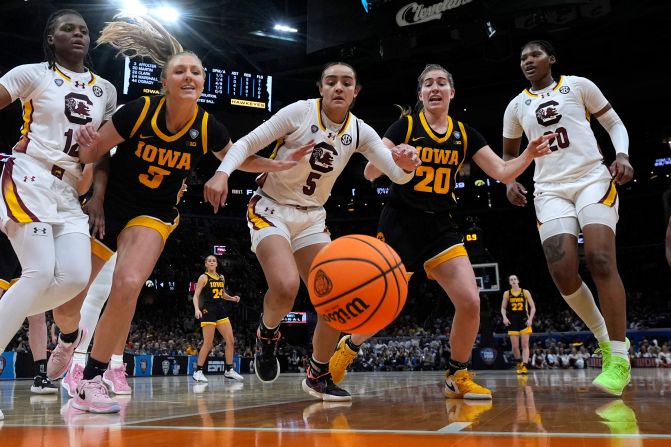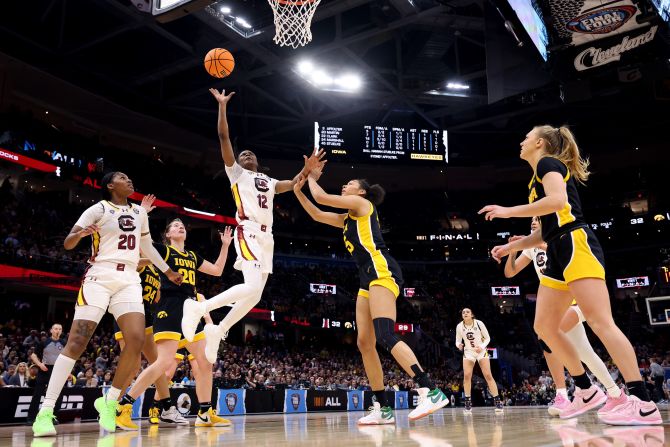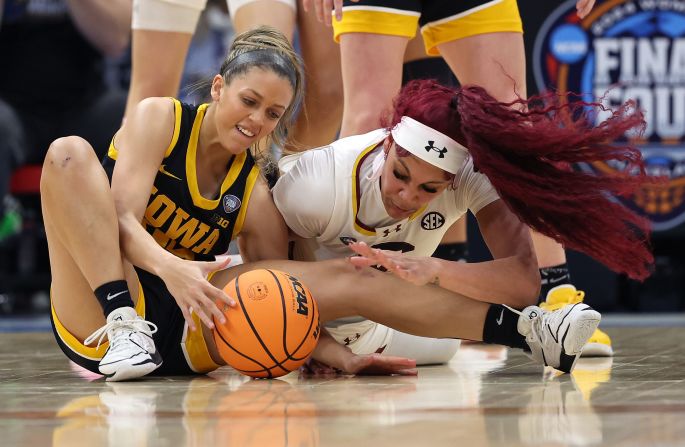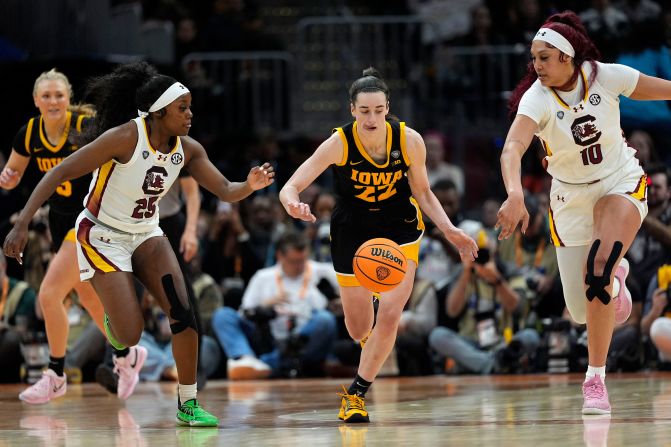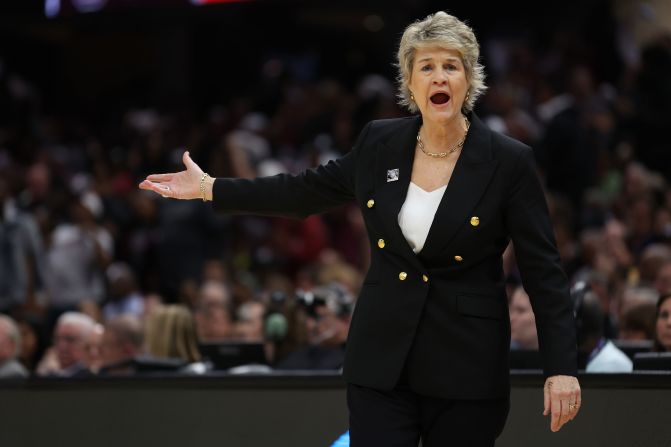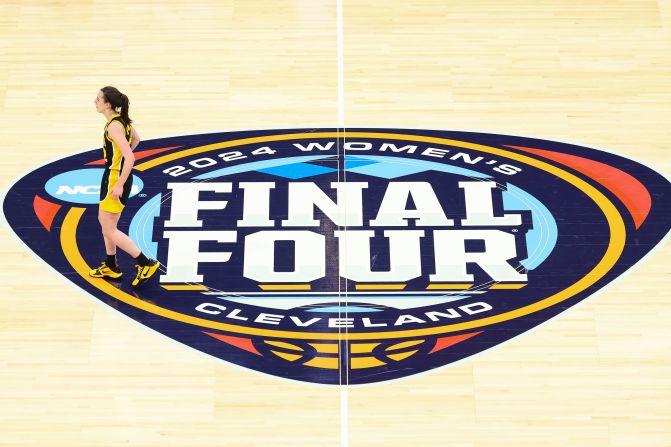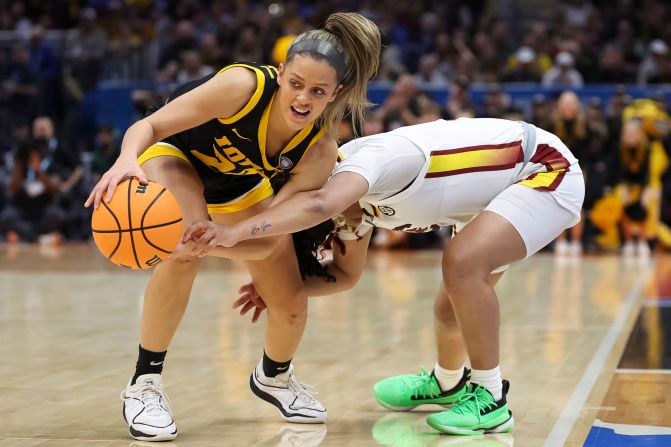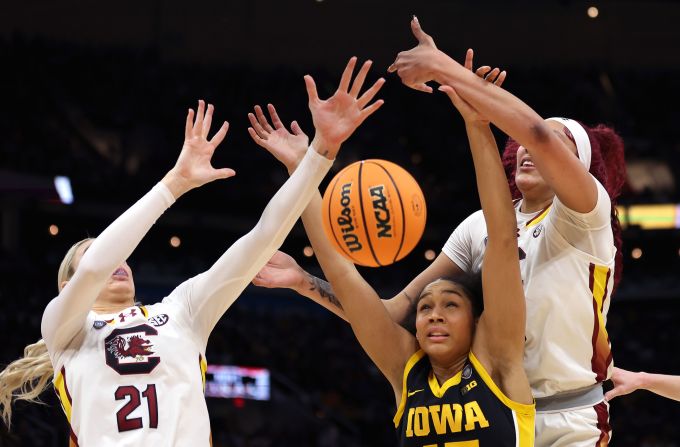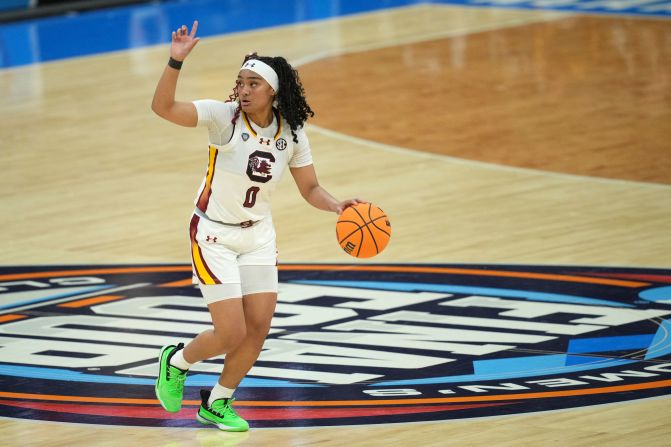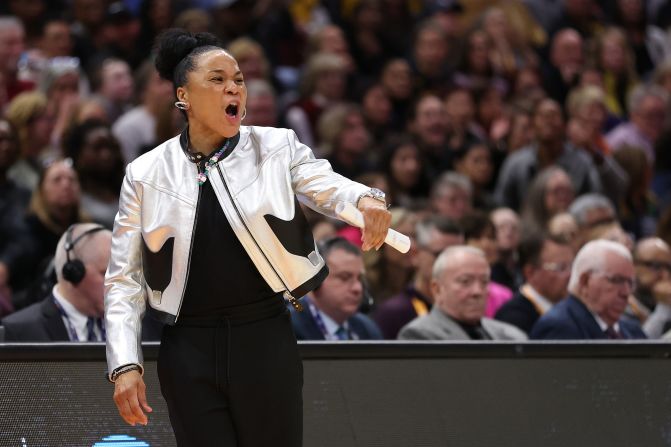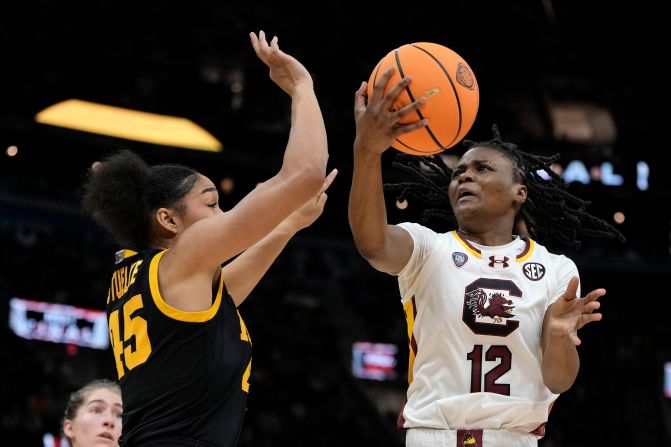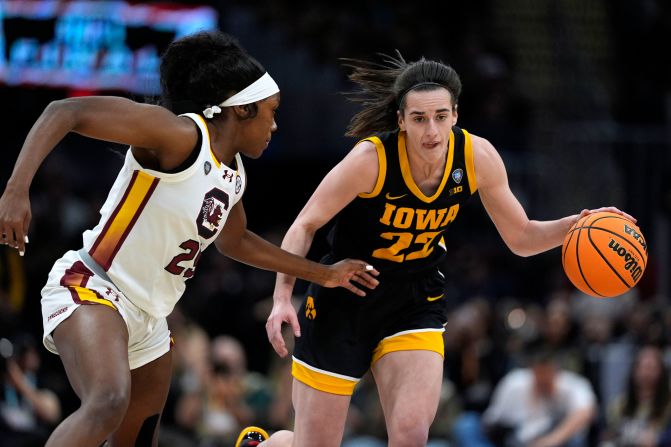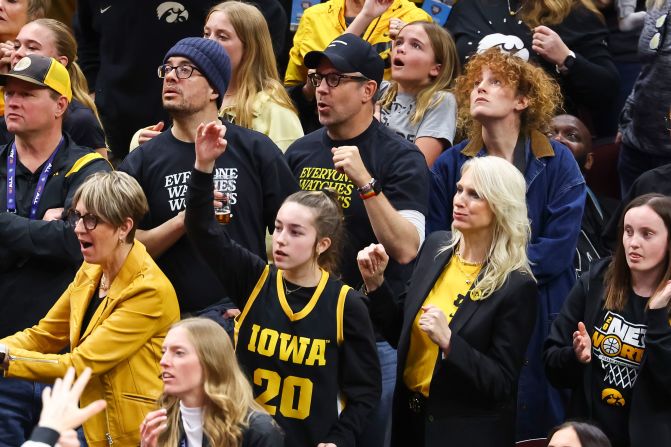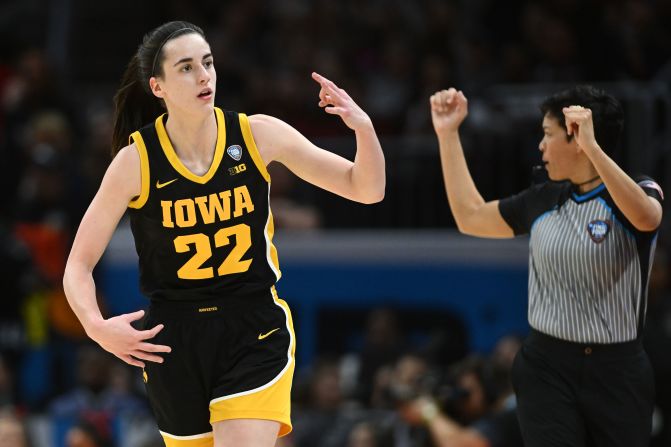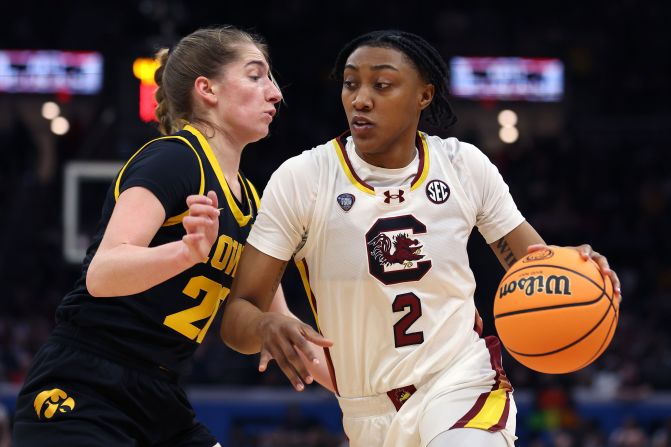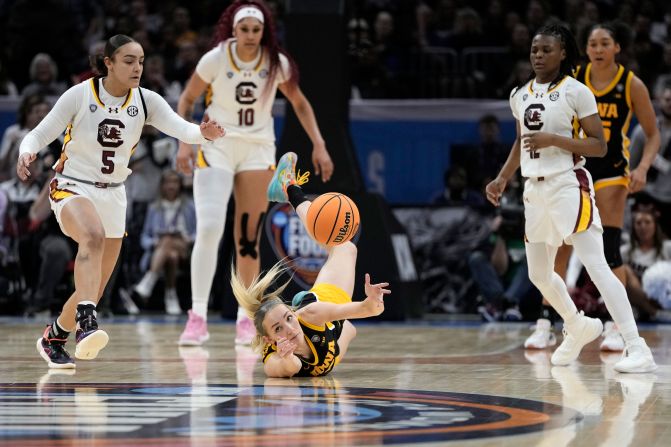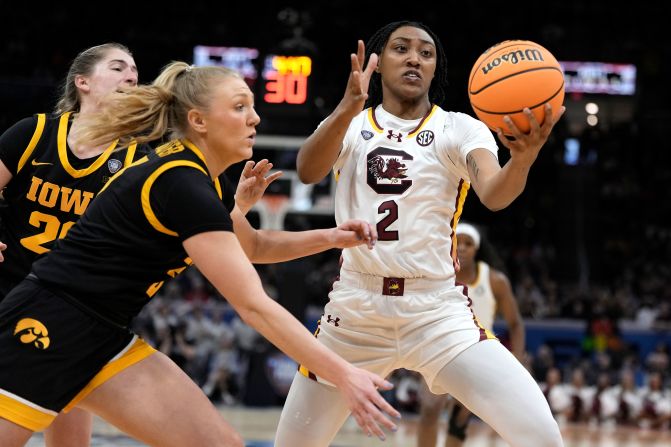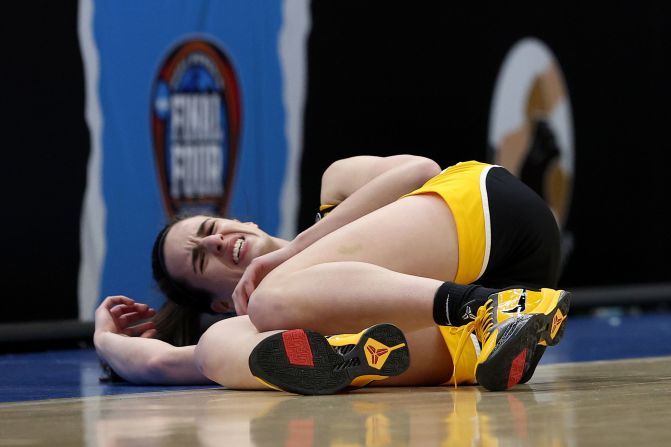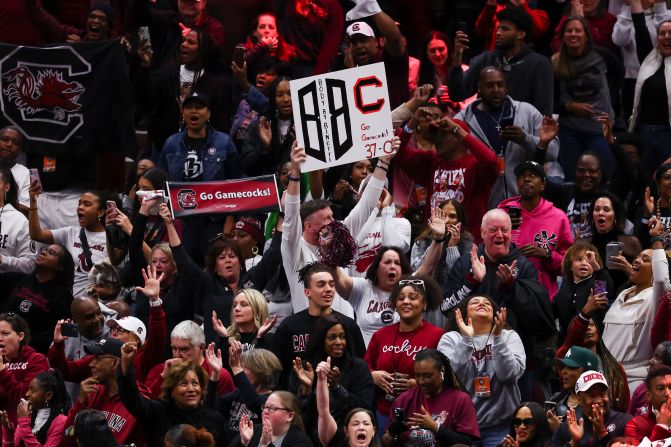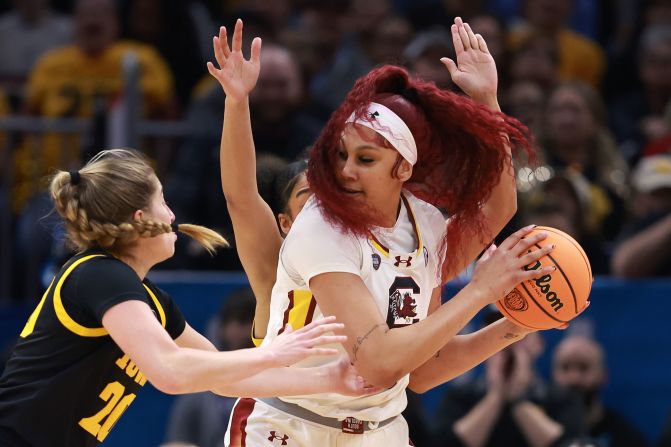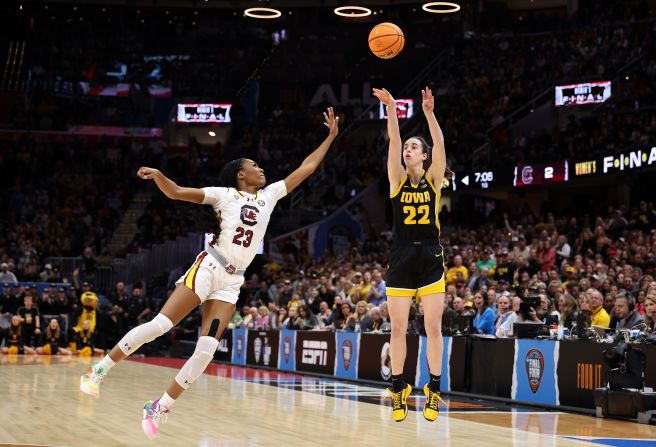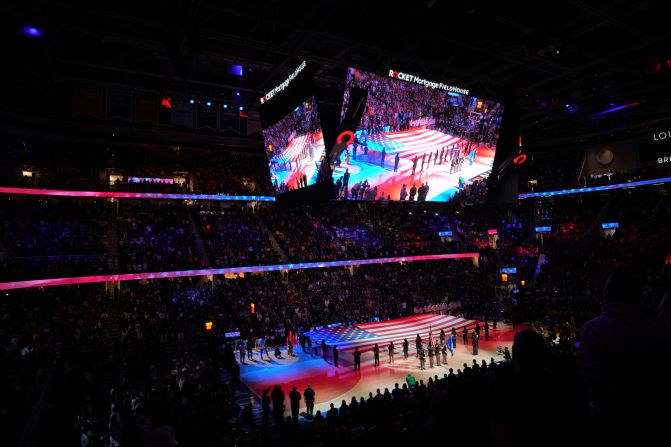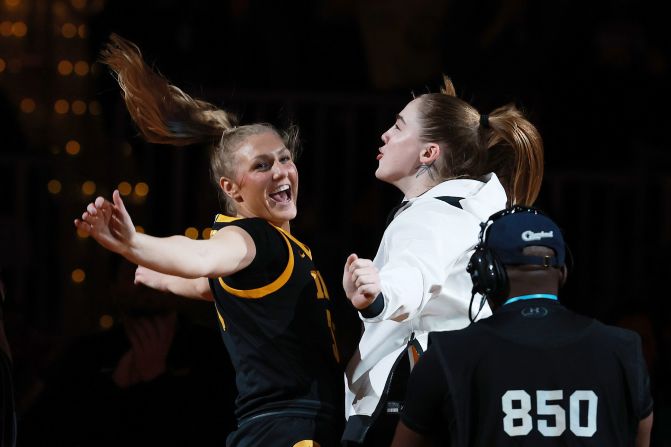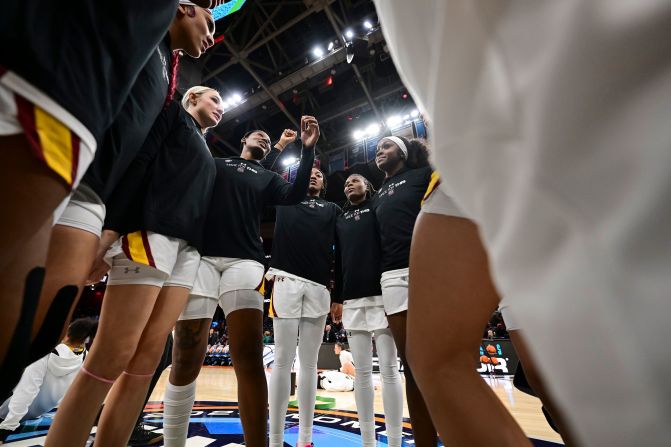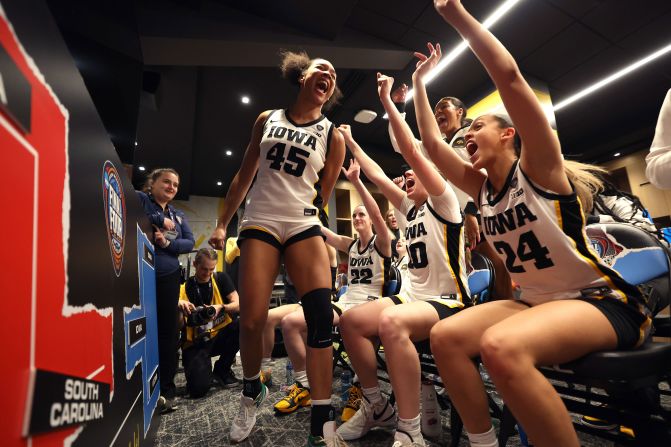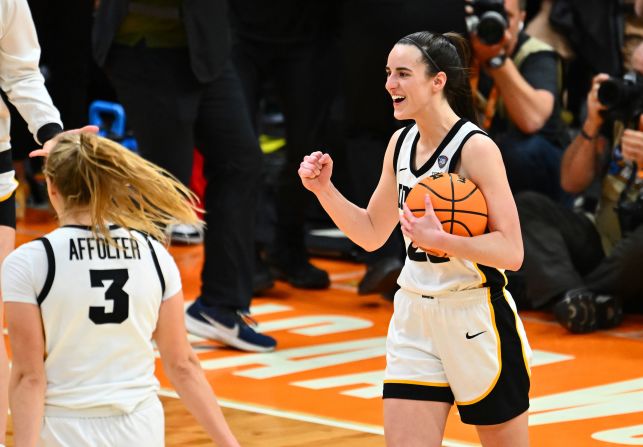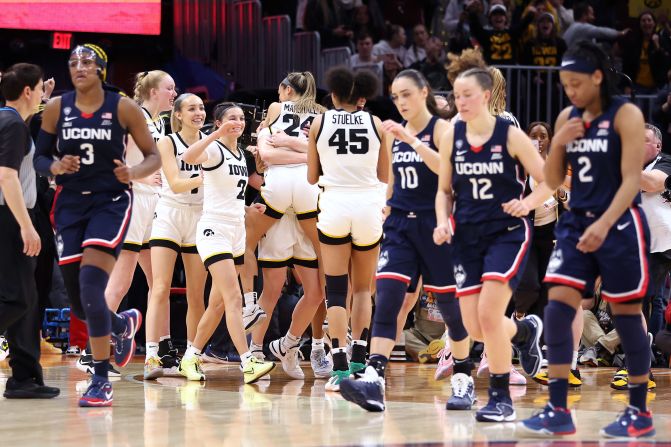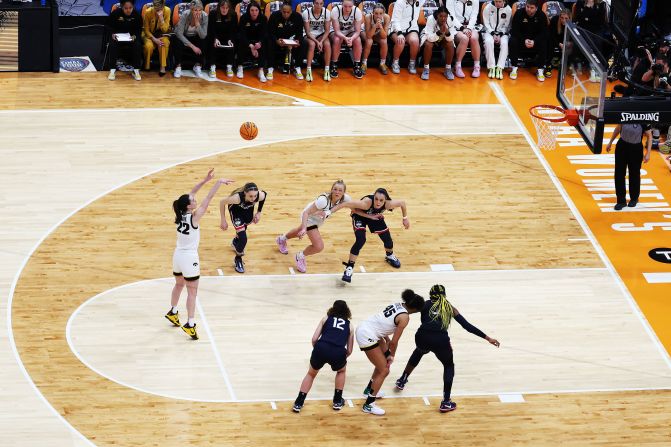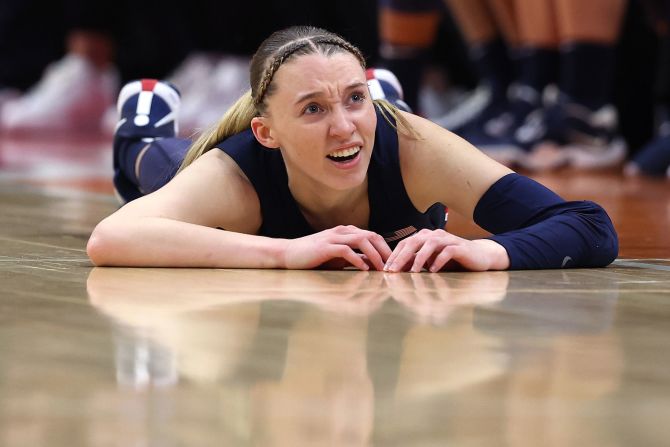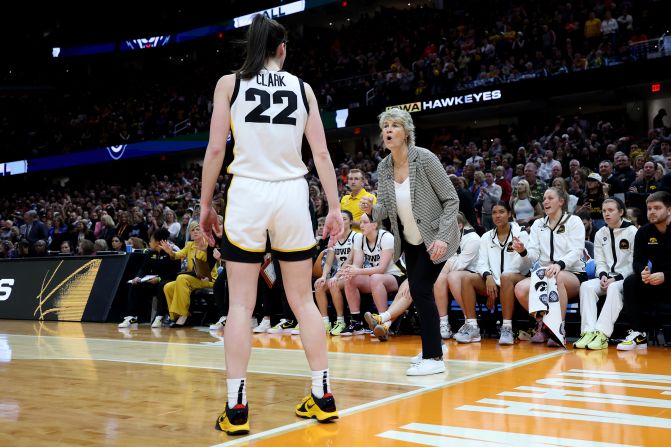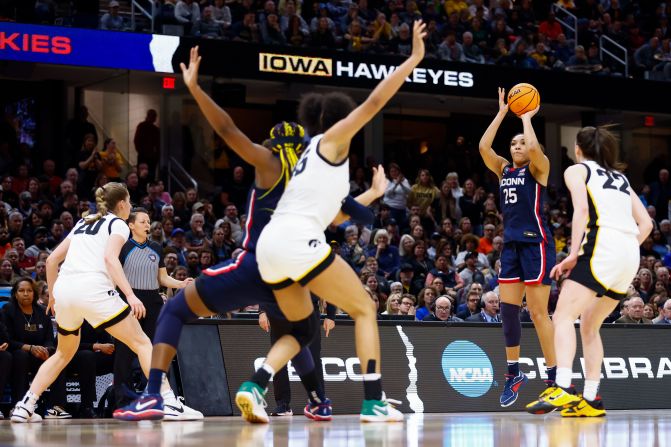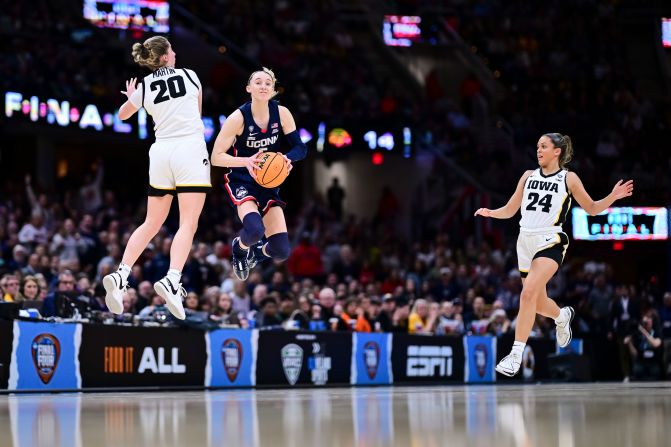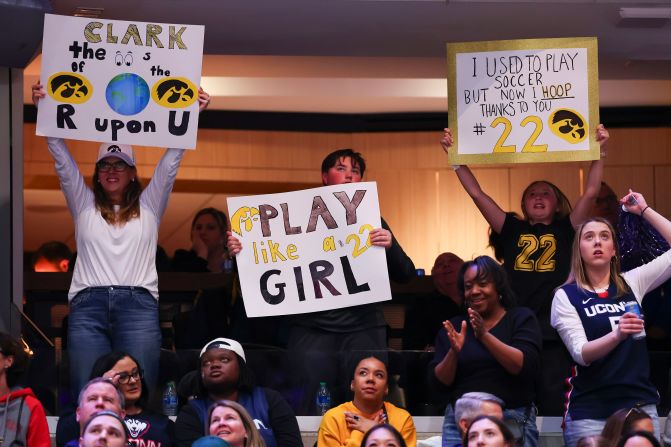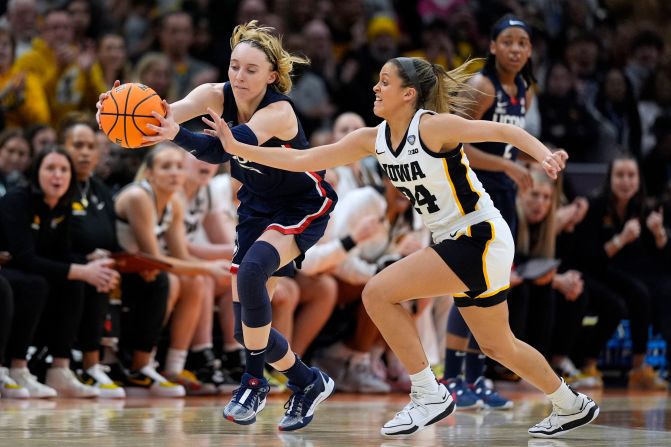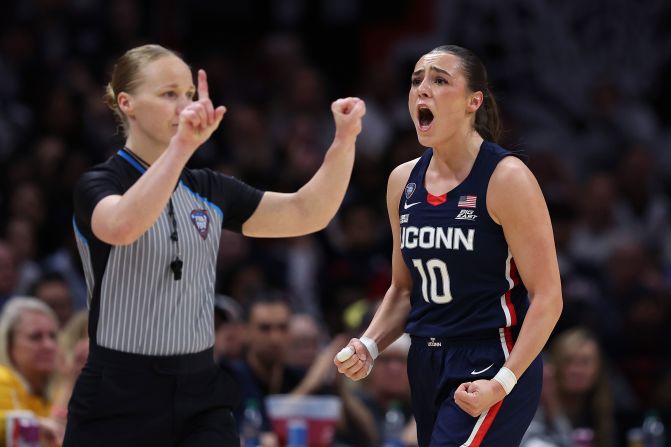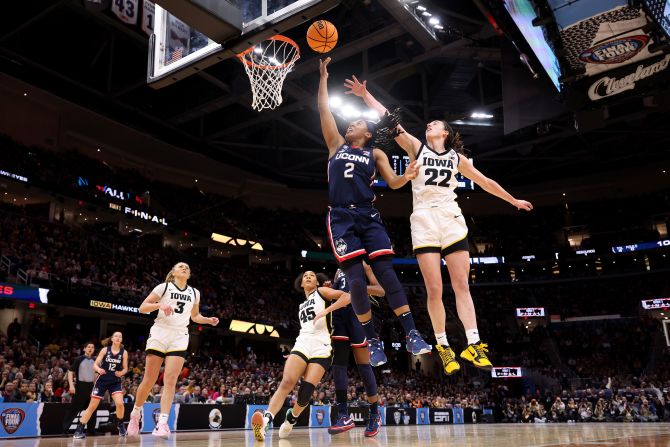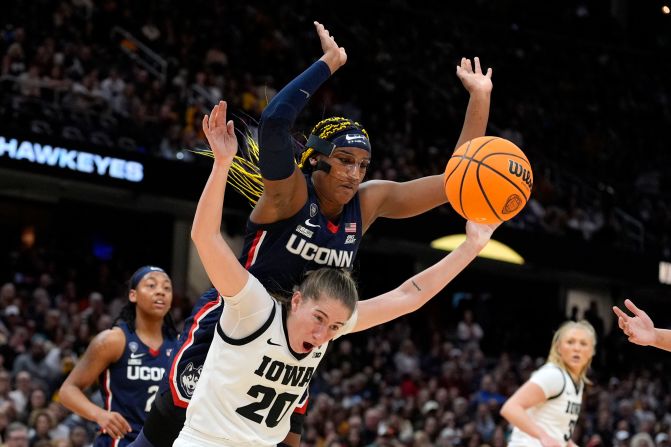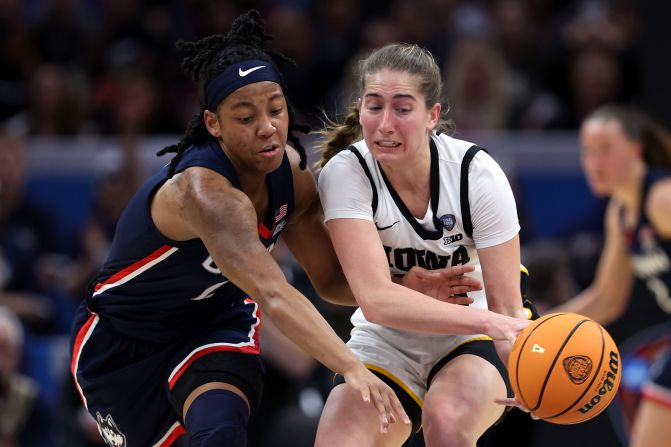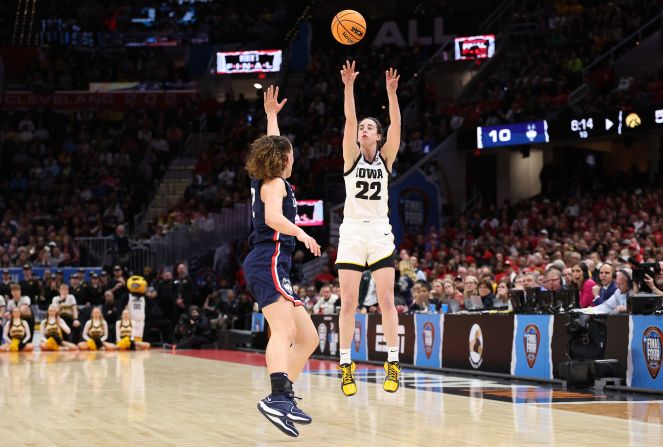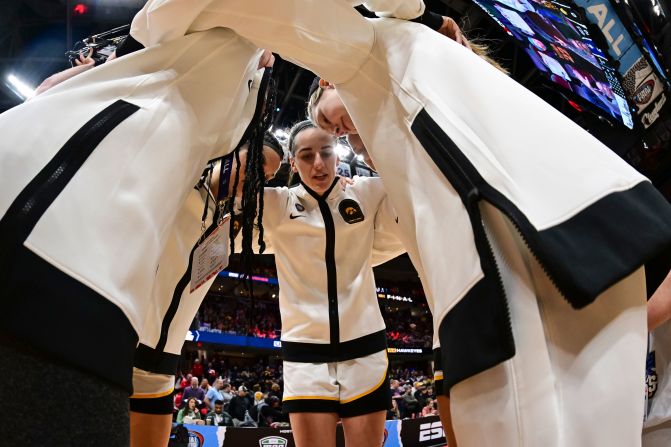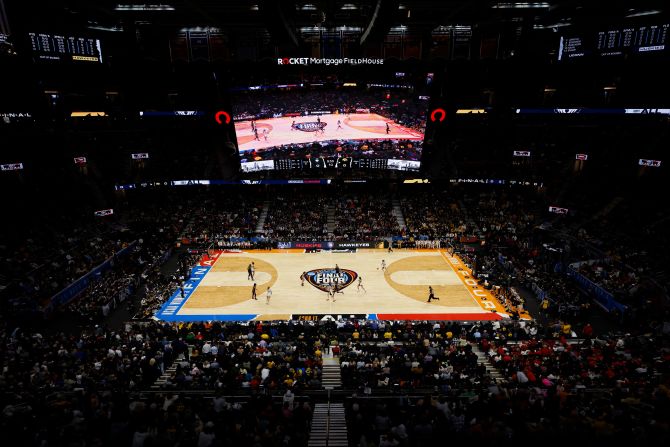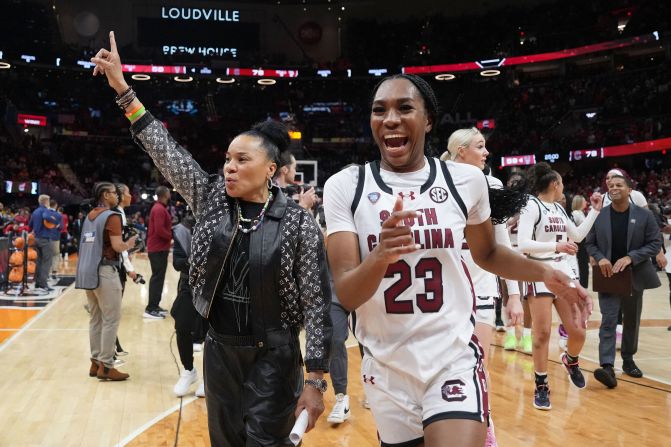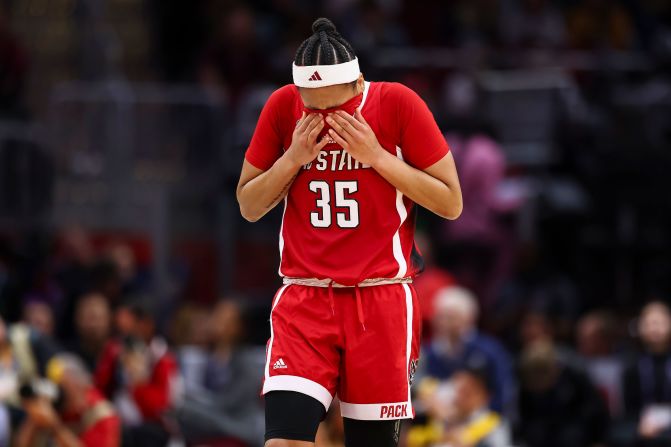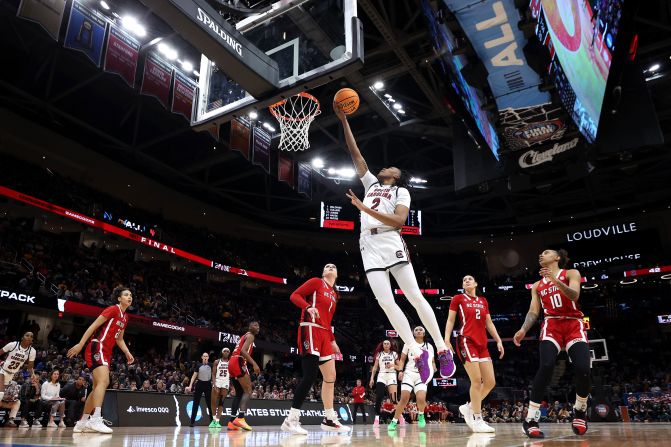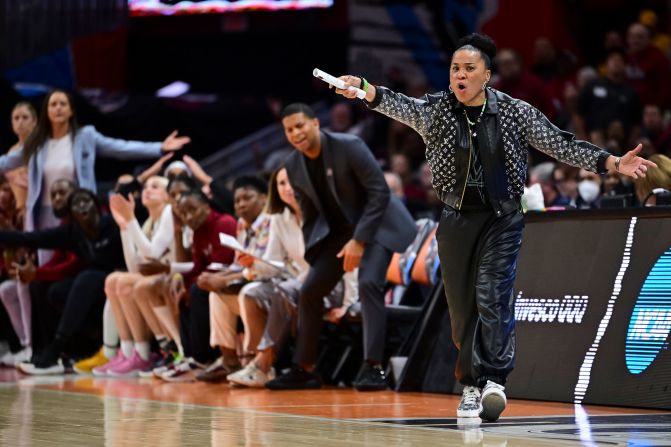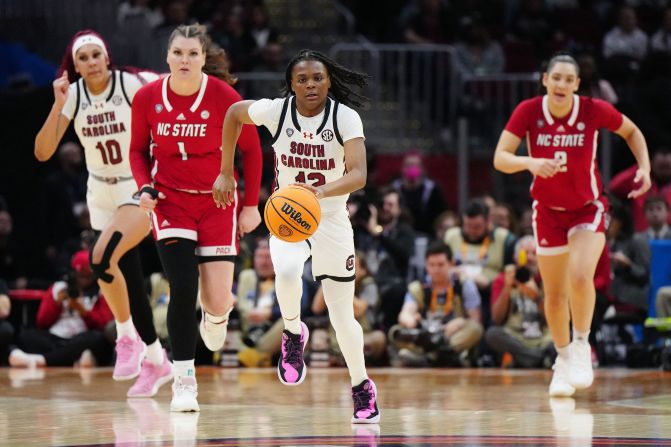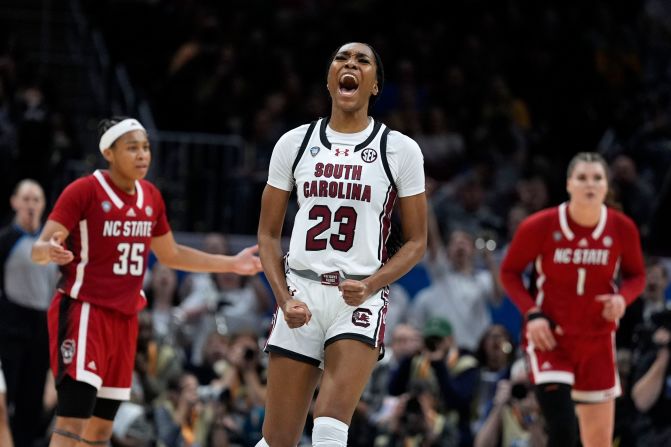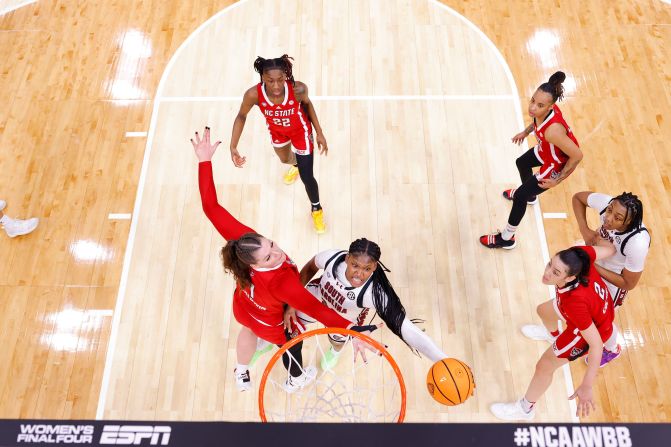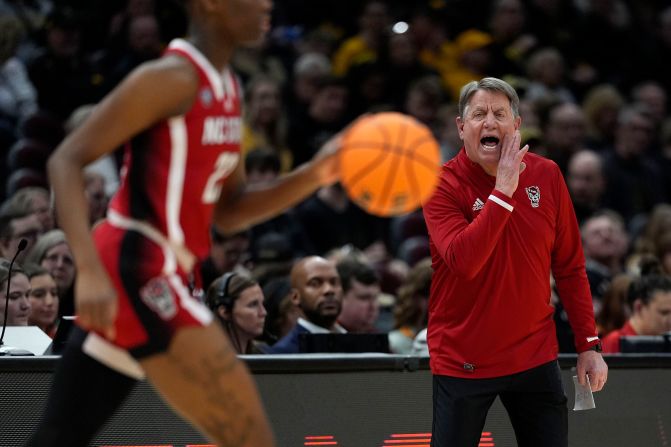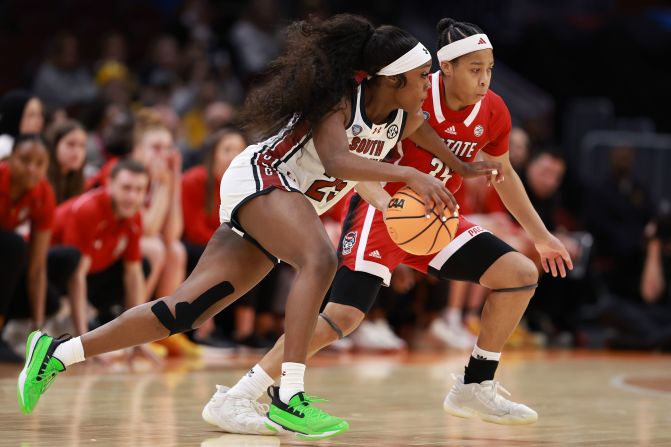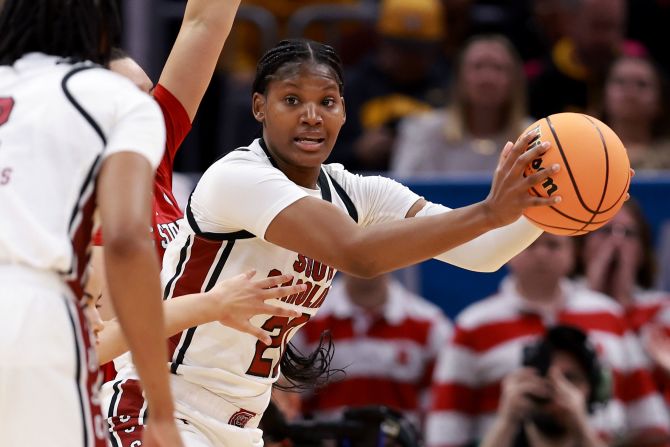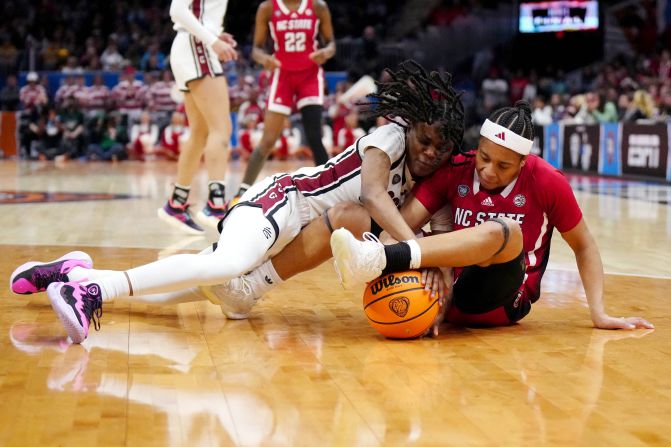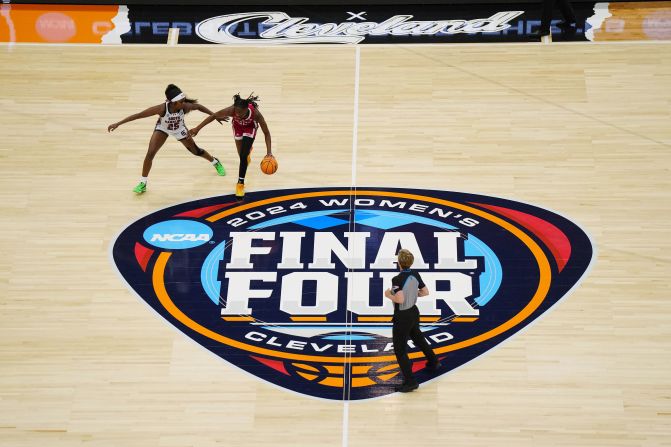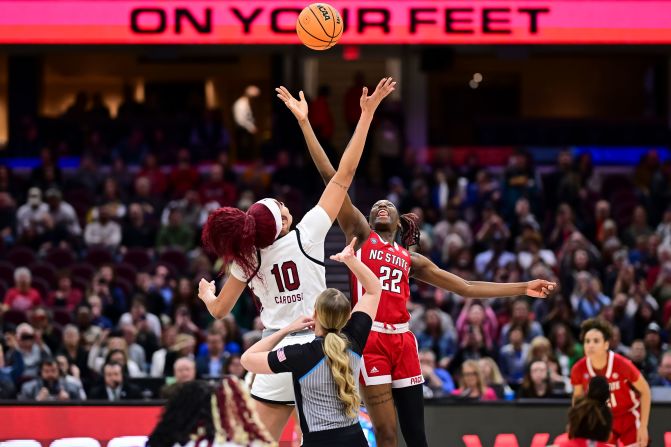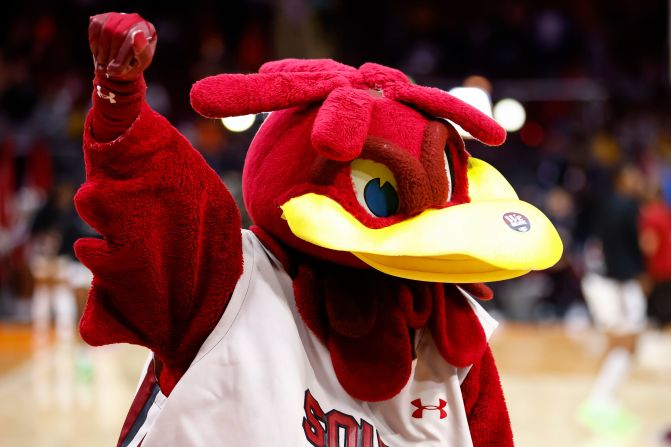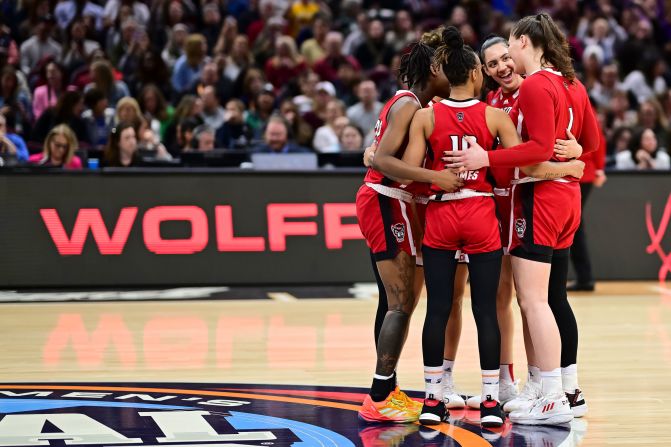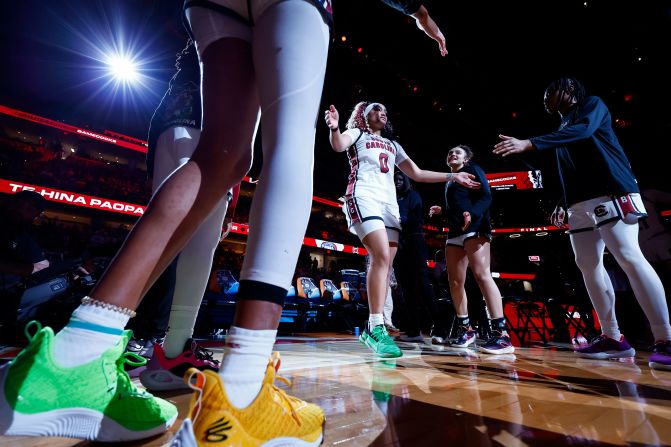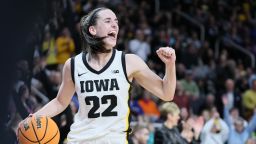Editor’s Note: Amy Bass (@bassab1) is professor of sport studies at Manhattanville College and the author of “One Goal: A Coach, a Team, and the Game That Brought a Divided Town Together” and “Not the Triumph but the Struggle: The 1968 Olympics and the Making of the Black Athlete,” among other titles. The views expressed here are solely hers. Read more opinion on CNN.
I was in high school when Georgeann Wells, who played center for West Virginia, became the first women’s college player to dunk a ball — December 21, 1984 — in a game against the University of Charleston. Now my daughter is in high school — and she doesn’t know a time when women didn’t dunk; to her, players such as South Carolina’s Ashlyn Watkins do it because anyone can and should.

It’s familiar to her, typical even, for people to go beyond just watching women’s sports. In her world, people discuss, cheer, analyze and debate women’s sports. I’ve thought of this shift in our realities often as March Madness has unfolded, with stunner after stunner game on the court, culminating in South Carolina’s victory in the women’s final over the Caitlin Clark-led Iowa team Sunday night. More than one observer on social media can be found asking: Was there even a men’s tournament this year?
There’s been an ebb and flow that’s led up to this moment in women’s college basketball since the first NCAA championship game in 1982, when Louisiana Tech beat Cheyney State 76-62 and then waited some 35 years to get their rings. We can talk about things like Stanford coach Tara VanDerveer’s record (1,203-267). We can talk about UConn’s dynastic legacy – 11 national titles, a legendary coach in Geno Auriemma and transformative stars including Rebecca Lobo, Nykesha Sales, Renee Montgomery, Kerry Bascom, Sue Bird, Diana Taurasi, Maya Moore and, of course, Breanna Stewart, considered by many (including South Carolina coach Dawn Staley) to be the greatest of all time, winning four straight national titles as a Huskie (2013 - 2016) and named Most Outstanding Player each time. We can even talk about a time in the 1990s when CBS found women’s college basketball to be a network ratings star, perhaps especially when Pat Summit’s Lady Vols of Tennessee faced the Auriemma’s Huskies.
But now, finally, as we look back at the past year — and especially the last few weeks — women’s college basketball is demonstrating the persistent development that often goes missing when talking about women’s sport, ensuring that the men are no longer the only marquee event in the NCAA’s annual tournament, no longer the singular definition of college basketball and no longer the only ones media want to profile and in which sponsors want to advertise.
This is more than having a moment
It’s one thing to be having a moment. It’s another thing to be the moment. On Sunday afternoon, the number one team in offensive efficiency, Iowa, faced the number one team in defensive efficiency, South Carolina. Despite a furious first quarter that saw Clark hit a historic 18 points, making her the NCAA tournament’s all-time leading scorer, the Gamecocks landed on top. Their win made them just the 10th NCAA Division I women’s team to complete a season undefeated, finishing 38-0, and displaying an unselfish depth led by Most Outstanding Player Kamilla Cardoso, “the separator” according to Staley, and someone who – with 15 points and an astounding 17 rebounds – Iowa had no answer for.
It’s been exhausting in the best of ways. This year’s women’s tournament just kept getting better with every turn. Even the controversy (and ensuing social media ugliness) that surrounded the final seconds of that Final Four battle, when a ref called foul on Aaliyah Edwards for an illegal screen, showed the intensity with which people were following the action.
That intensity is proof positive that women’s basketball has exploded. Now we are riding a wave of what can happen when attention is paid to the women’s side of a game, making true in historic ways that we need to invest in women’s sports to get results, not wait for results to invest. And while women’s basketball shouldn’t have needed a Clark or a Cardoso or a Paige Bueckers or a JuJu Watkins or an Angel Reese for the sport to get the respect all its players deserve, basketball now has these names, these athletes and a whole lot more.
We’ve played this game before, and not just in basketball. In soccer, the US Women’s National team built a damn dynasty before successfully battling for a historic collective bargaining agreement – and that agreement likely would not have happened if not for World Cup titles in 2015 and 2019 while the American men failed to even qualify in 2018. Now as the women’s college game has gone supernova, the WNBA (where Clark, Reese and Cardoso are headed, to join the likes of Stewart and others) is readying for its 28th season — and its valuation continues to grow, with indicators for a bright future (just take a look at the Seattle Storm’s numbers).
The valuation of the college game, too, is on a meteoric rise. Tickets for the women’s tournament have gone all Taylor Swift and rivaled – outpaced – those of the men’s, continuing a trajectory we saw last year, when women’s Final Four tickets were approximately 15% more expensive than the men’s. While the average sale price for the men’s Final Four games this year hovered around $1,000, the average resale ticket to the women’s (which take place in much smaller spaces, making tickets harder to come by) was more than twice that.
Think about this: the open practices for Iowa and South Carolina sold out on Saturday. That’s 17,000 people who wanted to watch… a basketball practice.
Where the ‘Caitlin Clark effect’ goes from here
And while the hype around the women’s tournament this year had Clark at its center – without question, she’s the show, even when teams find a way to shut her down – women’s basketball (which, just saying, has always been exciting to watch) has not only built on but transcended her well-deserved celebrity. Iowa’s Elite Eight and Final Four games against LSU and UConn, respectively, felt like title games in and of themselves, showcasing an increasingly well-known cast of characters and teams.
While this kind of frenzy doesn’t happen on the shoulders of just one player, the impact of Clark in accelerating sustained growth for the game is incalculable. As the undefeated Gamecocks steadily worked their way through their side of the bracket, Iowa – which sold out their games all season because of Clark pandemonium – had luminaries like Jason Sudeikis in the seats and record-shattering ratings on television. Iowa’s revenge match against LSU netted 12.3 million (peak 16 million) viewers, more viewers than had ever watched a women’s college basketball game, topping the ratings of every MLB, NHL and MLS game last season. Yet it was a record that lasted just a few days, as Iowa’s 71-69 slugfest against UConn earned 14.2 million viewers (peak 17 million), the largest audience for an ESPN basketball broadcast ever, with more viewers than last year’s World Series and NBA Finals, and every Daytona 500 and Masters final round since 2013.
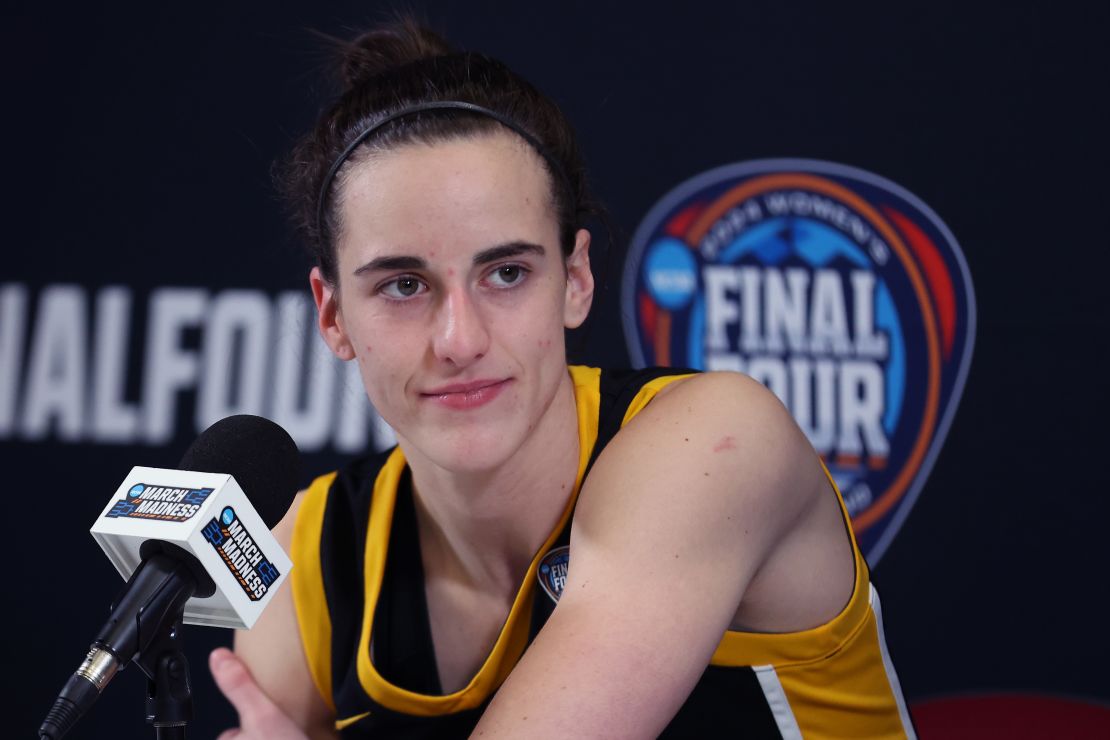
Those audiences are letting us see who and what they value, speaking far more loudly than anyone who has held tight to the mantra that women’s sports are not interesting to watch and thus can never be profitable, ignoring, as so many do, the generations of investment in the men’s side of sport and the chronic lack of investment in women. Time and time again, women’s sports have demonstrated their commercial viability, their capacity to be profitable and their ability to grow, but advertising revenue and the media attention have not followed.
How much money has that kind of misogyny lost them?
So therein lies the rub. The question is not at this point whether people will watch. They will. Rather, it’s whether the infrastructure of sport and all that surrounds it will follow through, leaving behind the familiar and automatic belief that women’s sport simply exists as a token of equity – a kindness, if you will – and embracing and capitalizing on its past and present to grow the future.
Stop being surprised by the power of this game
After this landmark season, what comes next? If South Carolina’s first-year stars MiLaysia Fulwiley, who came in from the bench and quickly turned the tide, and Tessa Johnson, who contributed 19 points off the bench, are any indication, South Carolina might be solidifying a dynastic run of its own. “My freshies are at the top of my heart,” Staley said Sunday of the young players she has referred to as her “daycare,” players who have several years in front of them to continue this winning trajectory.
As for the veterans, a good number are heading into the WNBA draft, with Clark likely – certainly – going first, and Stanford’s Cameron Brink, Cardoso, Tennessee’s Rickea Jackson, and Edwards not far behind. Reese, who gave a heartbreaking presser after LSU’s Iowa loss, saying that she hadn’t “been happy” since winning last year’s national championship, showed yet again that even – especially – when women hit it big, they still deal with hate prescribed uniquely for them. Reese took inspiration from Serena Williams and rebounded with characteristic style points to put her decision to go pro in Vogue. With the tagline “Bayou Barbie Out,” Reese told us in an elegant video that “this was a difficult decision but I trust the next chapter because I know the author.”
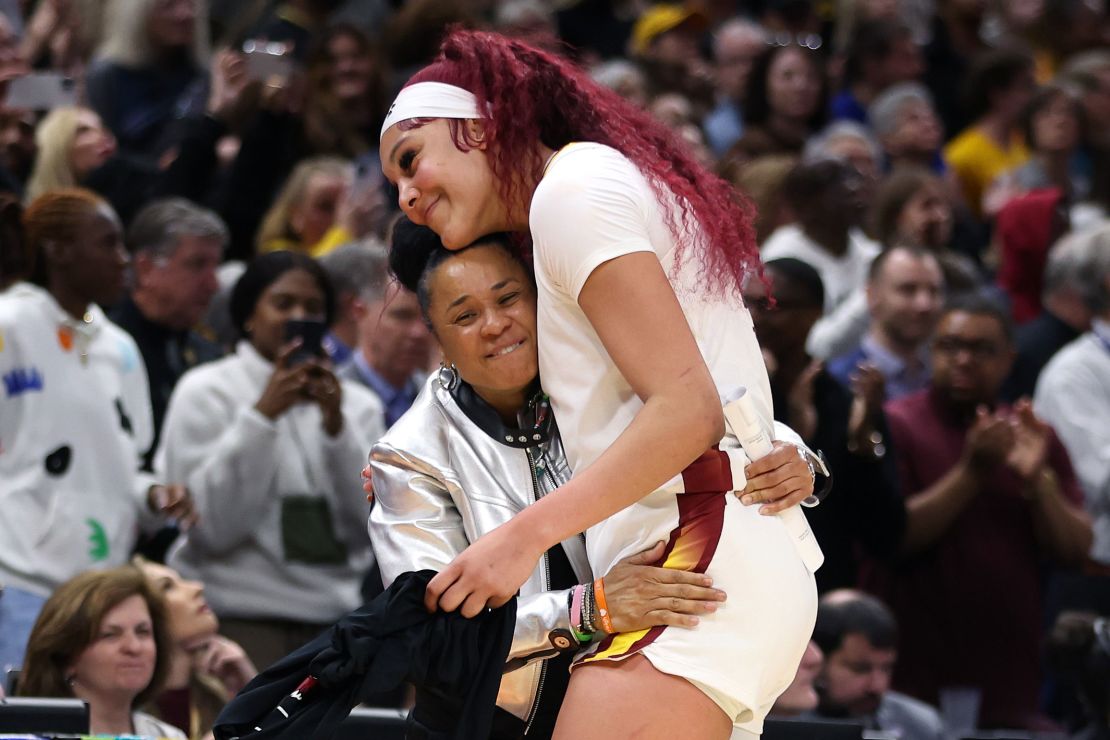
Their rookie seasons will be undoubtedly different from their crowning college moments. Not for nothing, based on speculation that Clark (who stepped off a college court for the last time Sunday with 20 seconds left on the clock, her mark on the game etched in concrete) will go to the Indiana Fever, the Las Vegas Aces moved their July game against the Fever from the 12,000-seat Michelob Ultra Arena to the 20,000-seat T-Mobile Center.
This is the kind of impact that Staley, who was initially rendered tearful, doubled over and speechless in the wake of her third championship, was talking about when she finished her on-court victory interview with words about Clark’s impact and the future. “I want to personally thank Caitlin Clark for lifting up our sport… she carried a heavy load,” Staley said. “When she is the number one pick… she is going to lift that league up as well.”
It took a public shaming to get the NCAA to slap a MARCH MADNESS logo on the women’s’ courts and give them equitable accommodations. It took a historic LSU win over Iowa last April to really get a conversation started once again, a conversation that we have had many times when women’s teams find their audience, selling out arenas and advertising spots alike. Again, this isn’t the first time. But hopefully it is the last time that anyone thinks it is the first time we are hopeful about the prospect of women’s sport, always being mindful of everything that has come before. Because while South Carolina won the title, when it comes to women’s sports writ large, this tournament had no losers.
